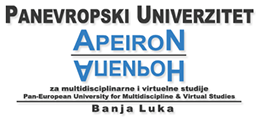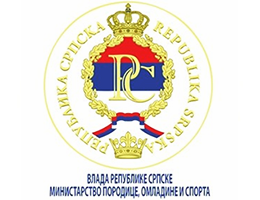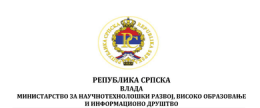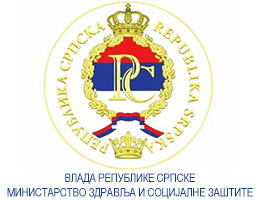Dalkroz metoda i njen uticaj na motoriku, lokomotorni aparat i estetiku pokreta
Volume 12, Issue 1 (2022)
Volume 12, Issue 1 (2022)
Dalkroz metoda i njen uticaj na motoriku, lokomotorni aparat i estetiku pokreta
Apstrakt:
DDalkroz metoda predstavlja proces prevođenja zvuka u telesnu akciju u kojoj se muzičke veštine savladavaju preko kinestetičkih vežbi. Akcenat je na fokurisanoj pažnji koja se posvećuje realizaciji pokreta, zbog čega se stvara svesna veza između uma i tela. Prirodni pokret tela se uz muzički sadržaj prevodi u organizovani akt, čime se telo pretvara u instrument i prenosi određene delove muzike u pokret. Autorka u radu nudi pregled istraživanja o doprinosima Dalkroz metode svakom životnom uzrastu, zaključujući da predstavlja dobru strategiju upravljanja svakodnevnim životom, načinu integrisanog učenja i melodičnu dopunu fizičkom vežbanju. Ne poznaje uzrasna ograničenja zbog čega je primenjiva tokom čitavog života.
Ključne riječi:
Dalkroz metoda, telo, pokret, muzika, ritam.
Puni tekst:
DOI:
Reference:
Aktivna škola. Priručnik za direktore. Demokratija u školama. EDC/HRE. (2019). Strasbourg: Council of Europe Publishing.
Bogdanowicz, E. (2016). Dalcroze Eurhythmics in therapy for children with Attention Deficit Hyperactivity Disorder (ADHD) symptoms. Approaches: An Interdisciplinary Journal of Music Therapy, Special Issue 8(2), 134-146.
Calle, J. C. C., Garay, J. P. P., Esquivel-Ynjante, O. R., Alarcon-Diaz, H. H., Yabar-Miranda, P. S., Menacho-Vargas, I., & Taboada, M. A. R. (2021). Neuropsychological Maturity in Pre-school Children. NeuroQuantology, 19(5), 1-9.
Cavanagh, P., Evans, J., Fiatarone, M., Hagberg, J., McAuley, E., & Startzell, J. (1998). Exercise and physical activity for older adults. Med Sci Sports Exerc, 30(6), 1-29.
Dalcroze Eurhythmics Skipping Game with Greg Ristow. (2014). Available at: https://www.youtube.com/watch?v=UWif5Xss_Ec
Dalcroze Eurhythmics Stopping-Starting Quick Reaction with Greg Ristow. (2014). Available at: https://www.youtube.com/watch? v=zsROX7pQdZM
Flohr, J. W., & Persellin, D. C: (2011). Applying Brain Research to Children’s Musical Experiences Classes. In: S. Burton & C. Taggart (eds.), Learning from young children: Research in early childhood music (pp. 3-22). Lanham, MD: Rowman & Littlefield.
Franco, S., (2005). Working with the body, the body at work, Eurythmics in art., Teaching and the medical sciences. Émile Jaques-Dalcroze: music in movement. Exhibition book. Geneva: Institut Jaques-Dalcroze.
Galikowska-Gajewska, A. (2014). Music in motion. In M. Petrović (ed.), Proceedings of the 16th Pedagogical Forum of Performing Arts. (pp. 157-165). Belgrade. FMU.
Gardašević, N. (2020). Analiza izvještaja eksterne evaluacije za fizičko vaspitanje u osnovnoj školi. Vaspitanje i obrazovanje, 45(4), 151-167. [in Serbian]
Gruhn, W., Haußmann, M., Herb, U., Minkner, C., Röttger, K., & Gollhofer, A. (2012). The development of motor coordination and musical abilities in pre-school children. Arts BioMechanics, 1(2), 89.
Herrera, M. B., & Vargas, P. C. (2019). The Effect of One-Session Rhythm Therapy on Mood States in Female and Male Corporate Employees. Retos: nuevas tendencias en educación física, deporte y recreación, (36), 273-277.
Jaques-Dalcroze, E. (1921/1980). Rhythm, Music and Education. London: The Dalcroze Society Inc. (prevod Helena Rubinštajn).
Johnson, M. (1987). The Body in the Mind: The Bodily Basis of Meaning, Imagination, and Reason. Chicago: University of Chicago Press.
Juntunen, M. L. (2002). The practical applications of Dalcroze Eurhythmics. Nordic Research in Music Education Yearbook, 6, 75–92.
Juntunen, M-L., Hyvönen, L. (2004). Embodiment in musical knowing: how body movement facilitates learning within Dalcroze Eurhythmics. British Journal of Music Education. 21, (2/2004), str. 199-214. DOI: 10.1017/S0265051704005686
Kim, J. (2014). “Boundaries” and “thresholds”: Conceptual models of the musical mind in the history of music psychology. Psychology ofMusic. 45, (2/2014), str. 671-691. DOI: 10.1177/0305735613487093
Lakoff, G., & Johnson (1980). Metaphors We Live By. Chicago: University of Chicago Press.
Lazić, Matović, & Vuković, S. (2021). Dalkroz metoda: Elementi integracije muzike i pokreta. Vaspitanje i obrazovanje, 66(2), str. 103-112. [in Serbian]
Lazić, S., Matović, M., & Janković, M. (2022). Euritmija i holistički razvoj deteta: dometi i ograničenja. Novi Sad: Visoka škola strukovnih studija za obrazovanje vaspitača. [in Serbian]
Martinović, V. (2015). Značaj i mogućnosti muzičkog obrazovanja u predškolskom uzrastu. Krugovi detinjstva, 3(2), 114-117. [in Serbian]
Matović, M., Lazić, S., & Radovanović, T. (2022). Music in Movement: Dalcroze Method in Serbian Preschool Educational System – Two Studies Perspective. In: Robert Celec (ed.). Contemporary Issues in Education 2021. Hamburg: Verlag dr Kovač GMBH (pp. 77-94).
Merleau-Ponty, M. (1968). The Visible and the Invisible. Evanston: Northwestern University Press.
Nelson, M. J. (1955). Music in Early Childhood. In: Constance Carr (Ed.), Music for children’s living (pp.10-18). Washington: Association for Childhood Education International.
Osnove programa predškolskog vaspitanja i obrazovanja. (2018). Službeni glasnik Republike Srbije – Prosvetni glasnik broj 16. [in Serbian]
Petrović, M. (2015). Interdisciplinarni pristup u početnoj nastavi muzike. Krugovi detinjstva, 3(2), 118-126. [in Serbian]
Polanyi, M. (1966). The Tacit Dimension. Garden City, NY: Doubleday & Company.
Porges, S.W. (2011). The Polyvagal Theory: Neurophysiological Foundations of Emotions, Attachment, Communication, and Self-regulation. New York: WW Norton.
Referentni okvir kompetencija za demokratsku kulturu. (2020). Strasbourg: Council of Europe Publishing (Savet Evrope).
Roels, J. M., & Van Petegen, P. (2014). The integration of visual expression in music education for children. British Journal of Music Education, 31(3), 297-317.
Sheets-Johnstone, M. (1999). The Primacy of Movement. Amsterdam: John Benjamins Publishing Company.
Steiner, R. (2004). Human values in education (Vol. 20). Great Barrington, MA. SteinerBooks.
Sutela, K., Juntunen, M. L., & Ojala, J. (2020). Applying music-and-movement to promote agency development in music education: a case study in a special school. British Journal of Music Education, 37(1), 71-85.
Тoadvine, T. (2016). “Maurice Merleau-Ponty”. In Edward N. Zalta (Eds.) The Stanford Encyclopedia of Philosophy (Winter 2016 Edition).
Trombetti, A., Hars, M., Herrmann, F. R., Kressig, R. W., Ferrari, S., & Rizzoli, R. (2011). Effect of music-based multitask training on gait, balance, and fall risk in elderly people: a randomized controlled trial. Archives of internal medicine, 171(6), 525-533.
Van der Merwe, L. (2015). The first experiences of music students with Dalcroze-inspired activities: A phenomenological study. Psychology of Music, 43(3), 390-406.
Varela, F. J., Thompson, E., & Rosch, E. (1993). The Embodied Mind: Cognitive Science and Human Experience. Cambridge: MIT Press.






